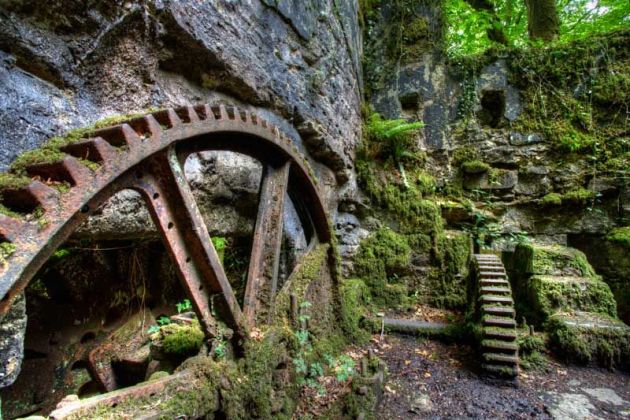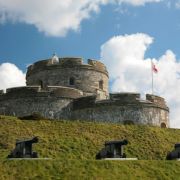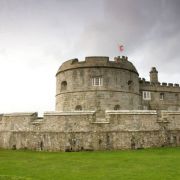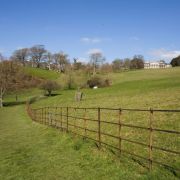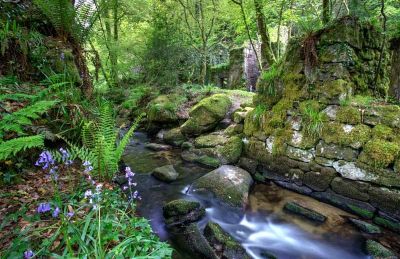
As with many of Cornwall's most beautiful sites Kennall Vale is a place that is somewhere between a natural attraction and industrial heritage. You could even argue that man's intervention has made an already lovely woodland that little more special, and I would agree.
Today this densely wooded valley is as peaceful a place as you could imagine. The only sounds you are likely to hear are the rushing of the water and bird song. A hundred years ago things were somewhat different, for Kennall Vale was the site of the Kennall Gunpowder Company.
Whilst it might seem strange to locate a gunpowder factory in woodland in the middle of nowhere the site was quite carefully chosen. The fast flowing River Kennall provided a source of power as it cascades down the valley. This was diverted into leats which in turn powered waterwheels. Obviously steam power, with its need to burn coal would not have been a good idea in a gunpowder mill.
There were other reasons the site was chosen; not only where the gunpowder mills set in woodland, but the company planted many trees. These were positioned between the various mill buildings so as to help absorb the force of a potential explosion.
The site was also ideally placed at the time, firstly for safety reasons it was quite remote, but also as it was close to many of Cornwall's most productive mines. At this time nearby Gwennap was described as the "richest square mile anywhere on Earth". As the majority of the gunpowder was destined for use in the mines this made perfect sense.
The process of making gunpowder was quite complex, partly owing to the potentially huge dangers involved. A large part of making gunpowder was taking the three key ingredients; saltpetre, charcoal and sulphur, and grinding them down to a fine powder. This would then be compressed. Simple as it sounds there were about ten steps in the process all of which were carried out in different buildings.
In total, there were around 50 separate buildings in the Kennall Vale operation, quite a few of which still remain - although these are slowly being taken over by nature. These were widely spaced along the river side, a further safety precaution.
Those remaining include the Corning House, Mixing House, Packing House, Change House and most notably, several of the Incorporating Mills. These were where the mixed products of the gunpowder were further ground and mixed. This stage was so potentially dangerous that less than 20Kg (50lbs) of powder was allowed in the same house at any one time.
Further safety features of the mills were incredibly thick walls but very light roofs, the idea being an explosion would be forced upwards rather than all around. The bearings of the machinery were made of copper, not steel, so as to reduce the amount of heat produced. The workers even wore special woollen suits.
But even with all these safety precautions in place accidents did happen. One such accident happened in May 1838 when five mills blew up one after another. Reports from the time say that part of one roof was found a mile away. Amazingly only one person was killed, although it apparently he left a wife and ten children.
In another explosion a few years later a worker by the name of John Martin was literally blown apart. His head was found around a quarter of a mile away and his other body parts were strewn across the site.
Thankfully those days are gone and the valley has been returned to nature. Gunpowder was replaced by newer more powerful explosives such as dynamite and gelignite. There was still some industry in Kennall Vale after the powder mills had closed. A small granite quarry was operated in the early 20th century. There was demand for the fine grained granite produced with stone being used as far afield as the Embankment in London.
Today, everything is carpeted in a layer of green moss with ferns and trees having taken up root within many of the old mills. The quarry is flooded with a sheer rock face rising out of the clear water.
The site is managed by the Cornwall Wildlife Trust and is a haven for woodland life. The Kennall Vale Nature Reserve is home to some unusual and rare species such as the greater horseshoe bat. It is also one of the best places to spot dippers in Cornwall.
Kennall Vale is roughly the same distance from Redruth, Penryn and Truro. Entry to the woodlands is free and it is a popular dog walking spot.
